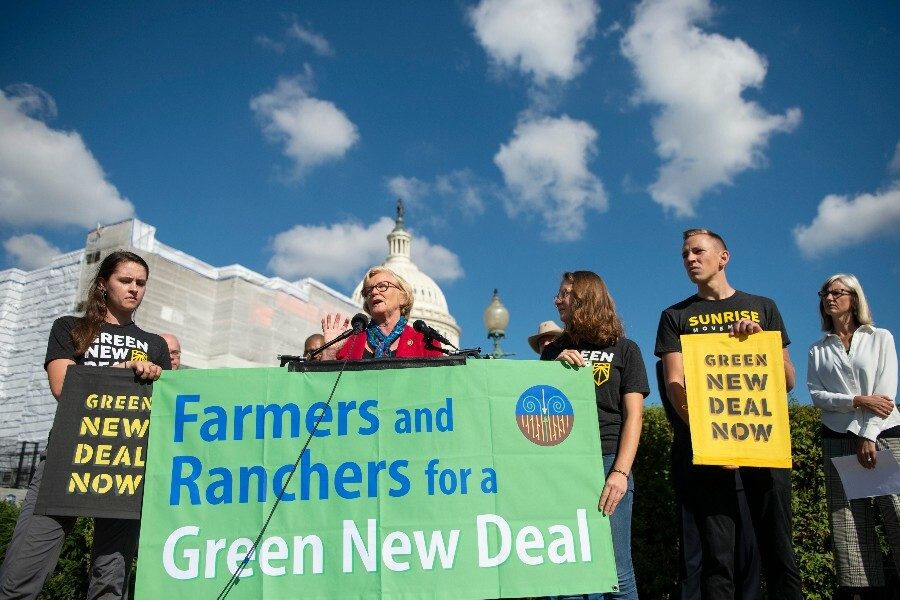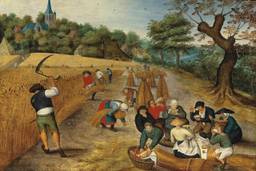Our Food System Hurts Farmers, Consumers and the Earth. We Can Build a Movement to Change It
Anthony Flaccavento

Americans cherish the “family farm.” Most are also happy to be able to buy local foods at farmers markets, grocers or their favorite restaurants.
In the marketplace, consumers are sending the message that they want more sustainable and organic food, sales of which exceeded $50 billion last year. And the vast majority of people in our nation believe that climate change is real, and that urgent action needs to be taken.
While there is some variability depending upon one’s political affiliation, Democrats and Republicans alike hold these views. If this is what we collectively believe, across party, then surely our politics and public policies support these priorities, right?
Well, not so much.
While there has been real progress in supporting local and sustainable farming in the past few Farm Bills, the fact remains that the local and organic portion of our food system continues to reside on the margins of federal research, training and extension and financial investment.
There’s good news here, to be sure: The 2018 Farm Bill designated $40 million per year for research and extension to support organic farming. It also increased funds to help farmers making the transition to organic practices.
Support for local food infrastructure has also been increased somewhat, with a number of past programs now consolidated as LAMP, the Local Agriculture Marketing Program.
While this increased federal support for sustainable farming is indeed good news, it remains an extraordinarily small piece of U.S. Department of Agriculture’s (USDA) pie. By comparison, payments to commodity growers, who are overwhelmingly large-scale, conventional farmers, have been averaging over $20 billion per year — that’s five hundred times as much as the organic farming research allocation. And nearly two-thirds of that $20 billion goes to the largest farmers, according to USDA data and an analysis by the American Enterprise Institute.
Even on a per-acre basis, the biggest 10 percent of farmers receive nearly two-and-a-half times the subsidy provided to mid-size farmers. With the current structure of the crop insurance and risk management programs, these big farmers are subsidized to get bigger still, including raising annual crops on ecologically vulnerable land.
Forty years after Earl Butz told farmers to “get big or get out,” almost everything about our system leads to exactly that.
Climate-change legislation, where it has materialized at all, has rarely considered the role that agriculture must play in slowing and mitigating its impacts. The encouraging exception here is recent state laws that incentivize and reward farmers for soil-building, carbon-sequestering practices. California and Maryland provide examples here, with Virginia and other states considering similar laws.
On the other hand, the Trump administration is ignoring critical climate-related research by its own staff at USDA, while marginalizing and cutting the funding to regional climate-resilience hubs launched just a few years ago.
And the current administration is all in on the “get big or get out” doctrine, with labor, safety and anti-trust enforcement accommodating the agribusiness giants, rather than protecting workers and family farmers.
Clearly, there’s an extreme disconnect between our public policy, on the one hand, and what would be good for consumers, family farmers and the ecosystem, on the other hand.
This battle has been waged for a few decades now, and though they’re remarkably persistent and effective, the National Sustainable Agriculture Coalition and other healthy farming advocates are simply out-gunned by Big Ag’s lobbyists. As a result, farm and food policy takes baby steps in the right direction, but never addresses the fundamental imbalances and problems that dominate and distort the system.
What can we do to change this?
According to a 2016 survey by Market Research, about 12 percent of adults in the U.S. report that they shop at farmers markets. That translates to about 25 million people.
Other research, including a 2018 study from the University of Wisconsin-Madison, indicates that on average, farmers market shoppers are younger, with more formal education and income than the population as a whole. While my own experience shows that people across the economic spectrum can and do buy groceries at farmers markets, it’s safe to say that the largest proportion of farmers market shoppers are educated about and committed to healthy eating.
What if we began to mobilize these “conscious consumers” for real change, as advocates for public policies that promote a healthy and sustainable food system?
What might happen if we were able to move a portion of them, say one out of every 20, from being responsible consumers to also becoming effective food citizens?
That would add up to more than 1 million knowledgeable advocates, taking their personal commitment to better eating to a bigger fight for a healthy, farmer- and climate-friendly food system.
Just imagine that.
A million-person food movement
I discuss this idea in some detail in my book, “Building a Healthy Economy from the Bottom Up,” but for our purposes here, let me suggest three specific steps to get this process going.
Step No. 1: First, we need to strike a balance between tackling the big, complex issues that must be addressed, and the need for manageable, winnable issues with which people can more readily engage.
To do that, we need a clear framework that connects the big and the small, the local and the global. One framework might be this: Fighting the bad stuff while investing in the good stuff.
While a bit simplified, this frame pushes us to consider big problems that completely undermine a healthy food system, for example how corporate consolidation and the lack of antitrust enforcement turns farmers into serfs, devastates the environment and sucks the life out of rural communities. Another foundational problem is the extraordinary loss of black-owned farms, approaching 90% over the past century.
Public policy decisions helped make these things happen. Policy choices can reverse them as well.
If we don’t confront big problems such as these, our positive impacts will never be transformative, relegating our advocacy to support for small pockets of healthy food and farming.
But at the same time, those big fights need to be brought down to size by identifying the best opportunities to build and scale up the alternatives, for example serious investment in local food infrastructure, which would enable consumers to buy more local food and farmers to get a better price. Or providing incentives for small and mid-size farmers to build healthy soils that pull excess carbon out of the atmosphere.
If we really want to transform our food system, we’ve got to be willing to fight the bad stuff while investing in the good stuff. Having a million or so deeply invested food citizens to help wage this fight improves our odds considerably.
Step No. 2: Secondly, we need to develop education and training models for this broad new base of advocates, built around their own experiences as local food customers, but going far beyond that.
The “fight the bad, invest in the good” framework is the starting point for that. But it needs flesh on its bones, including a succinct but sufficiently comprehensive analysis of our current system, a diverse set of examples of emerging alternatives, and a toolkit that enables people to connect the two and become effective advocates.
Step No. 3: Finally, we need not just an alliance between city folks and country folks, between climate activists and family farm advocates, but one that puts farmers and rural people at the forefront, as experts and leaders alongside their urban allies.
The challenge of transforming our food and farm system cannot ignore the broader political context of urban-rural polarization. There are several reasons for this divide, both legitimate and concocted. But it’s real.
A farmer-, consumer- and climate-friendly food system requires that we work together — as equals — across this divide.
All of us want to eat well, and all of us need a livable climate. Only a few of us are willing to farm. Let’s get in the same room and together build this million-person force of food citizens to make this happen.
Editor’s Note: This essay is the second of a two-part series originally published on the blog of the Organic Consumers Association. It is republished here with permission. To read the first part of the series―“The Local Foods Movement Has Made Half a Revolution. For the Other Half, We Need a Green New Dea”l―click here. To read the original version of this essay, click here.
Anthony Flaccavento is a farmer, author and rural development consultant in southwestern Virginia and the executive director of the Rural Urban Bridge Initiative.








